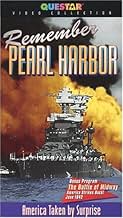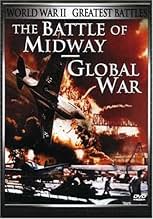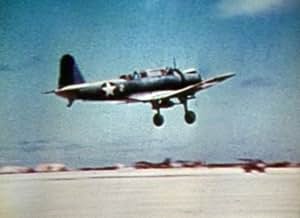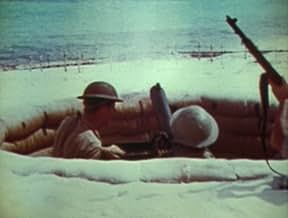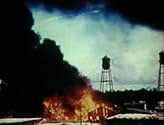Imágenes reales del ataque japonés a Midway en junio de 1942. La batalla finalizó con la victoria a favor de la marina estadounidense, que destruyó 28 barcos de guerra, 300 aviones nipones y... Leer todoImágenes reales del ataque japonés a Midway en junio de 1942. La batalla finalizó con la victoria a favor de la marina estadounidense, que destruyó 28 barcos de guerra, 300 aviones nipones y cuatro portaaviones del ejército japonés.Imágenes reales del ataque japonés a Midway en junio de 1942. La batalla finalizó con la victoria a favor de la marina estadounidense, que destruyó 28 barcos de guerra, 300 aviones nipones y cuatro portaaviones del ejército japonés.
- Dirección
- Guión
- Reparto principal
- Ganó 1 premio Óscar
- 1 premio en total
- Narrator
- (voz)
- Narrator
- (voz)
- Self - US Army Major
- (as Major Roosevelt)
- Main Narrator
- (voz)
- (sin acreditar)
- Narrator
- (voz)
- (sin acreditar)
- Self - Naval Aviator
- (sin acreditar)
Reseñas destacadas
What is most striking about this film is the concussion of the actual bombs, which have a horizontal spreading impact with huge destruction. What one sees in most movies in which battle scenes are staged, is ground explosions that blow up laterally and dissipate in the air with much less near damage.
Hollywood's John Ford was a Navy officer who directed this and other films for the Navy during WW II. Henry Fonda is the principal narrator. There isn't much by way of aerial combat or Japanese aircraft pictured here. Other Armed Forces photography would capture that. But this documentary earns its stars for the men who shot the film while under heavy enemy fire.
Accompanied by U. S. Navy photographer Jack MacKenzie, a former RKO assistant cameraman, Ford was filming much of the island's preparations when he heard about the Japanese fleet approaching the region-and the United States' plans to ambush it on June 4, 1942. The commanding officer of the island base, Captain Cyril Simard, told Ford, "Forget the pictures as much as you can. But I want a good accurate account of the bombing. We expect to be attacked tomorrow." Ford sought the island's highest point, a power station on the base. He situated MacKenzie and himself there equipped with two 16mm cameras and Kodachrome color film stock. Another film crew was stationed on one of the attacking carriers, the USS Hornet, to record all the sea action.
Once the Japanese Zeros appeared over the horizon, Ford and MacKenzie began cranking their cameras. Being high up posed an enormous danger to the pair. "The image jumps a lot because the grenades were exploding right next to me," Ford recalled in 1966. "Since then, they do that on purpose, shaking the cameras when filming war scenes. For me it was authentic because the shells were exploding at my feet." One bomb knocked the two down, slicing a deep gash in Ford's arm-from which he earned a Purple Heart. "It's where the plane flies over the hangar and everything goes up in smoke and debris, you can see one big chunk coming for the camera," described Ford.
The pair reeled off four hours of silent footage. After the monumental battle, they left immediately for Los Angeles. Ford knew he captured a ton of action which could make for an exciting documentary. Combining what was filmed on the island and those shot on the USS Hornet, he handed all the reels to editor Robert Parrish, who had assisted Ford in 1941's "How Green Was My Valley." Two scriptwriters shaped the narrative with Ford, voiced by actors Henry Fonda, Jane Darwell and Donald Crisp. Alfred Newman, the music director for 20th Century Fox, composed the patriotic soundtrack. Ford mixed special sound effects from the studio's library to add to the excitement of the documentary. In six short days, the picture was ready. But working for the OSS, Ford was suspicious the military would suppress the movie. Arranging a private screening at the White House with Franklin Roosevelt in attendance, Ford cleverly inserted a clip of president's son, Major James Roosevelt of the Marine Corps, who was overseeing the memorial service on the island soon after the battle. The impact at the conclusion when the segment was show was quite emotional for the Roosevelts. "When the lights came up, Mrs. Roosevelt was crying," Parrish in attendance noticed. "The president turned to Admiral Leahy and said, 'I want every mother in America to see this picture'." With that "The Battle of Midway" was released nationwide, with many viewers teary-eyed leaving the theaters The Academy Awards had established the Best Documentary for the first time, handing out four separate Oscars during its 15th annual ceremonies, the only time multiple awards were given in one category. "The Battle of Midway" was one of six Oscars Ford received in his lifetime.
¿Sabías que...?
- CuriosidadesDirector John Ford and cinematographer Joseph H. August were wounded by enemy fire while filming the battle.
- Citas
Main Narrator: Midway Island. Not much land right enough, but it's our outpost. Your front yard.
- ConexionesEdited into Ils ont filmé la guerre en couleur (2000)
- Banda sonoraAmerica, My Country Tis of Thee
(1832) (uncredited)
Music by Lowell Mason, based on the Music by Henry Carey from "God Save the King" (1744)
Words by Samuel F. Smith
Played in the score and later sung by an offscreen chorus
Selecciones populares
Detalles
- Duración
- 18min
- Mezcla de sonido
- Relación de aspecto
- 1.37 : 1


